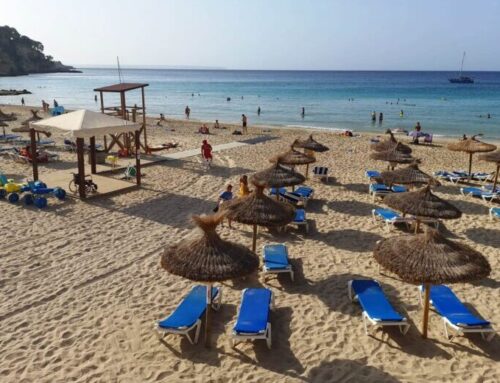The Director General of Energy and Climate Change, Pep Malagrava, and the Government’s Climate Change and Atmosphere service technician, Jinámar Tomás, defended this Wednesday at the World Climate Summit (COP27) being held in Sharm el-Sheikh, Egypt, the “urgent” need for island territories such as the Balearic Islands to receive more resources to be able to adapt to the consequences of climate change and global warming.
The Balearic Islands, like the whole of the western Mediterranean, will be one of the places where the effects of climate change will have the greatest impact. That is why the Government considers that adaptation planning is of the utmost importance in this decade. It is worth mentioning that the Balearic Islands have already presented the results of the PIMA Adapta Costas project, a study of how rising sea levels would affect the sandy coasts of the Balearic Islands in various scenarios in the years 2050 and 2100. For this reason, warned the Director General of Energy and Climate Change, Pep Malagrava, “it is vitally important to continue to allocate resources to the island territories, which will be the first to be affected. Our coasts are already suffering, and if we do not speed up adaptation projects, the economic and social consequences will become evident in the coming years.
Malagrava stressed the fact that “for the first time, resources from the regional budget will be earmarked to help the municipalities of the Balearic Islands to carry out adaptation projects, specifically 1.4 million euros. Adaptation to climate change must be the main policy of the next decade: we are talking about protecting ourselves from its effects, which are already here and will increase, even though we can mitigate them. This is a health issue.
The vulnerability of the islands “is a fact”

During the panel “Projection for adaptation to climate change: vulnerability and flood zones as a tool for adaptation”, Jinámar Tomás, Climate Change and Atmosphere service technician of the Government of the Balearic Islands, presented the results of PIMA Adapta Costas Illes Balears, with one of its main tools: the cartographic viewer of impacts on the coast due to climate change, which improves the existing risk maps in the Balearic Islands by incorporating the climate perspective.
On the other hand, the visualisation of the problems that will affect the coast of the islands led to the launch of the LIFE Adapt Cala Millor project, a governance project that has received the support of the European Commission to ensure consensus in decision-making regarding how to adapt an urban beach to the effects of climate change. In this regard, Tomás stated that “the scientific community is improving the quality of the studies that show that the vulnerability of the Balearic Islands to climate change is a fact. Improving our resilience must focus efforts on the most affected sectors, including our coast, given the imminent rise in sea levels. Failure to act is not an option, because it means losing most of our urban beaches: where there is no space for the beach to recede, the sea will take up the space now held by the sand.”
“The solutions adopted must be done with a high social consensus, as they are costly and will determine the future of our most important economic sector. For this reason, the LIFE Adapt Cala Millor project will be a pioneer in Europe, bringing together the tourism sector, the scientific community and the different institutional agents, as well as civil society, to ensure the future of an urban beach such as Cala Millor,” she stressed.







Leave A Comment